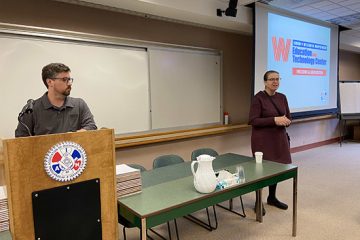By Ivana Saula
IAM Canadian Research Director
The federal election is in full swing and political parties are scrambling to address otherwise forgotten issues in an attempt to win votes. Environmental issues, Pharmacare, and other affordability issues are front and center of this election with all parties vowing lofty promises.
A number of issues have reached a critical point due to years of inadequate policy responses, or in some cases, total inaction. It’s certainly an election where much is at stake.
However, one key issue that industry, including the IAMAW, has been raising since February 2019 is the looming skilled labour shortage in the aerospace industry. The industry will be short some 55,000 workers by 2025, which is a modest projection. In fact, some employers are already having difficulty with recruitment. While the labour shortage is partly a demographic one, it’s also a consequence of lack of foresight and investments in training and education. Training and education are not expenditures, they are an investment a country makes in its future.
We are at a juncture where years of cuts, reductions and changes are coming to fruition resulting in a very real problem for industry. Left unaddressed, the labour shortage will only become more severe. The IAMAW addressed this very problem in the report, “Grounded Potential”, outlining a number of recommendations targeted at both the provincial and federal governments.
The IAMAW’s position was endorsed by the Aerospace Industries Association of Canada in a joint statement in June, 2019. The same concern is now being raised by several industry associations, such as, the Air Transport Association of Canada, Canadian Airports Council, Canadian Business Aviation Association, the Helicopter Association of Canada, the National Airlines Council of Canada and the Canadian Owners and Pilots Association.
The IAMAW and numerous associations in aerospace and the aviation industries are united in their call for the federal government to address the skilled labour shortage.
The solution is straightforward; increase the capacity to train skilled workers to meet domestic demands and remain competitive in the global market. The IAMAW’s report also stressed the importance of earmarking funds in transfer agreements to provinces for specific training of skilled trades people. This would ensure that money is available to training institutions to offer up to date training in state of the art facilities that help students get job ready.
In addressing the skilled labour shortage, the government is not only securing Canada’s economic future, but also the livelihoods of thousands of Canadians, which families and communities rely on.
The NDP is the only party with a plan to support and grow the aerospace industry in Canada, due in part to the pressure exerted by the IAMAW on all the political parties during our successful lobbying efforts in parliament.
We will not stop there; we will continue to engage policy makers, business leaders, professional associations, and participate on panel discussions, as we work to ensure our member’s voices are at the forefront of the solution to sustain and grow Canada’s aerospace industry.
———————-
This article was originally posted on the IAM Canada website. View the original post here: Skilled Labour Is a Finite Resource: “Grounded Potential” Recommendations Get Backing From the Aviation Industry


